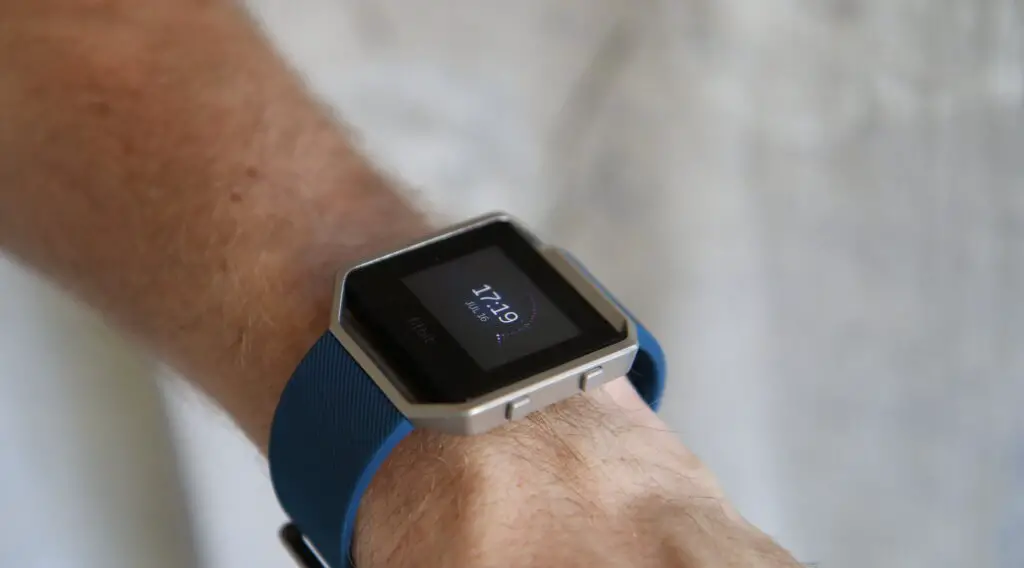This detailed guide will cover every step of the Fitbit clock change process, tailored for users of all levels.

Steps to Perform Fitbit Clock Change
To perform Fitbit clock change, do the following:
Accessing the Fitbit App
To start changing your Fitbit’s clock, you need to access the Fitbit app. First, ensure you have the app installed on your smartphone. If not, download it from the Apple App Store or Google Play Store.
Once installed, open the app and log in with your Fitbit account credentials. If you’re a new user, you’ll need to sign up and follow the on-screen instructions to create an account. Ensure that your smartphone’s Bluetooth is turned on so it can communicate with your Fitbit device.
Open the app and you should see a dashboard displaying your activity stats. If your Fitbit device isn’t paired with the app, go to the ‘Account’ tab, and select ‘Set Up a Device’. Follow the prompts to pair your Fitbit via Bluetooth.
Check out this AT&T Motorola G Play 2023 smartphone available at Walmart.
Navigating to Clock Settings
Once your Fitbit is paired and syncing with the app, it’s time to navigate to the clock settings. Tap the ‘Today’ tab at the bottom of the screen, and then your profile picture at the top to access your account settings.
Here, you will see a list of your paired devices. Select your Fitbit device to access its specific settings. In the device settings menu, look for the ‘Clock Faces’ option.
This section allows you to browse and change different clock faces for your Fitbit device. It’s where you’ll be able to personalize how time is displayed on your Fitbit.
Selecting a New Clock Face
In the ‘Clock Faces’ section, you’ll find a wide range of clock styles and designs. You can browse through categories like ‘Stats Heavy’, ‘Digital’, ‘Analog’, and others, depending on what information you want displayed on your Fitbit screen.
Some faces show more data, like heart rate or steps, while others are simpler. Tap on a clock face to see a preview. If you like it, select ‘Install’ to apply it to your Fitbit.
This may take a few moments, and your Fitbit may vibrate to indicate that the new clock face is being installed. After installation, the new clock face will automatically be displayed on your Fitbit.
Adjusting Time Settings
After selecting a new clock face, the time on your Fitbit should update automatically to match your smartphone’s time. However, if you notice the time is incorrect, you can manually sync your Fitbit.
To do this, swipe down on the app’s dashboard to initiate a manual sync. Ensure that the time zone settings on your smartphone are correct, as your Fitbit relies on this information for accurate timekeeping.
If your phone is set to automatically update its time zone, your Fitbit will do the same when synced.
Syncing with Your Smartphone
Regular syncing of your Fitbit with your smartphone is crucial for accurate timekeeping. This is particularly important when you travel across different time zones or when daylight saving time changes occur.
To ensure regular syncing, keep the Fitbit app running in the background on your smartphone and maintain a Bluetooth connection.
If your phone’s time changes, your Fitbit should automatically update its time during the next sync. Regular syncing also ensures your fitness data is up-to-date.
Troubleshooting Common Issues
If you’re having trouble with the Fitbit clock change process, there are several troubleshooting steps you can try. First, ensure that your Fitbit is charged and within range of your smartphone.
If the clock face isn’t updating, try restarting your Fitbit device by pressing and holding the side button for about 10 seconds until you see the Fitbit logo.
In addition, check if your smartphone’s Bluetooth is on and properly paired with your Fitbit. If the issue persists, try uninstalling and reinstalling the Fitbit app, as this can resolve many syncing issues.
For more specific problems or device-related issues, refer to Fitbit’s official support page or contact their customer service for assistance.